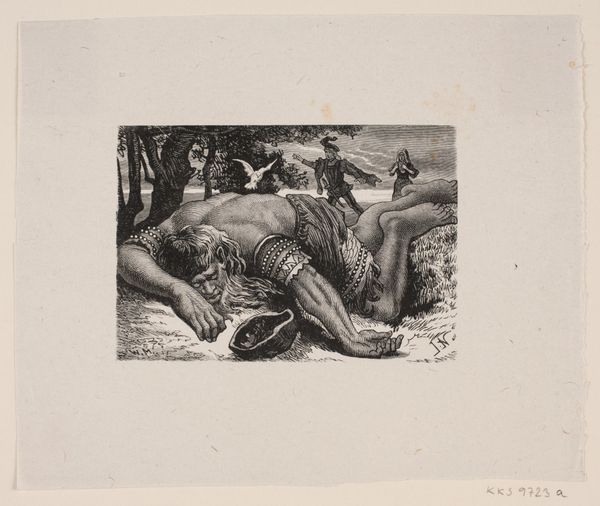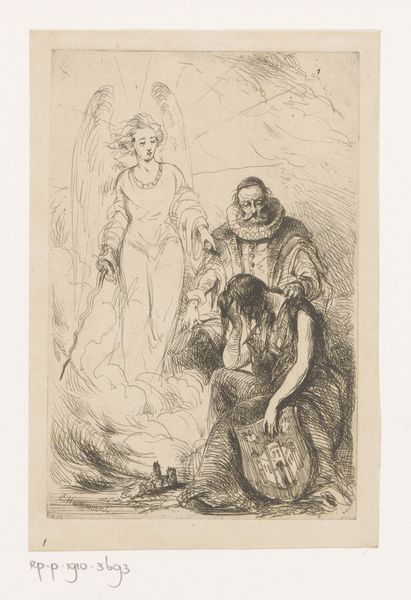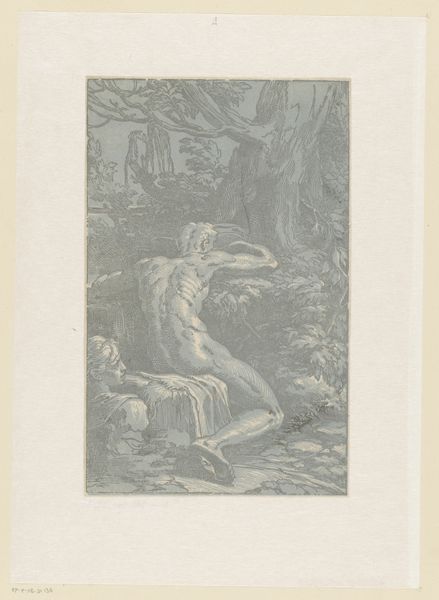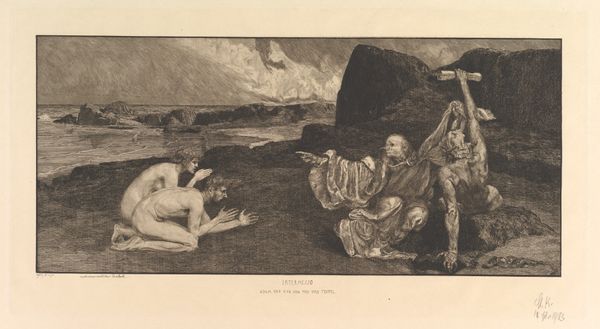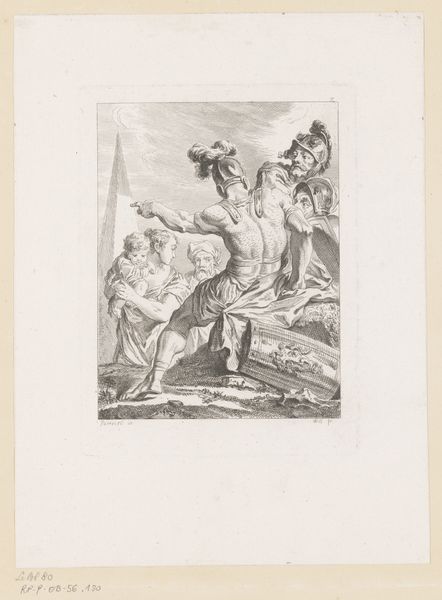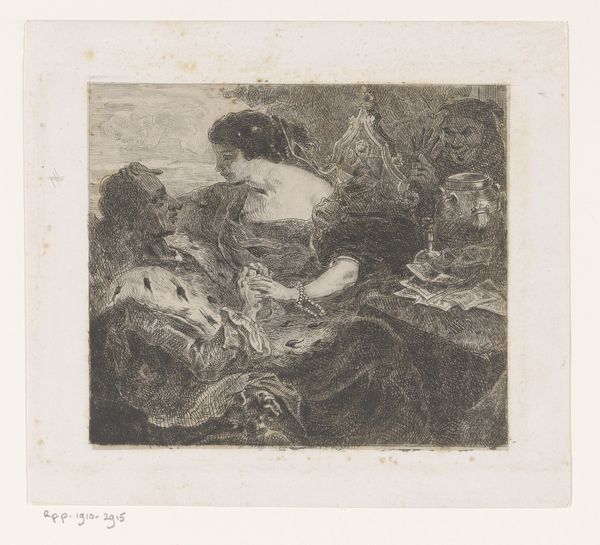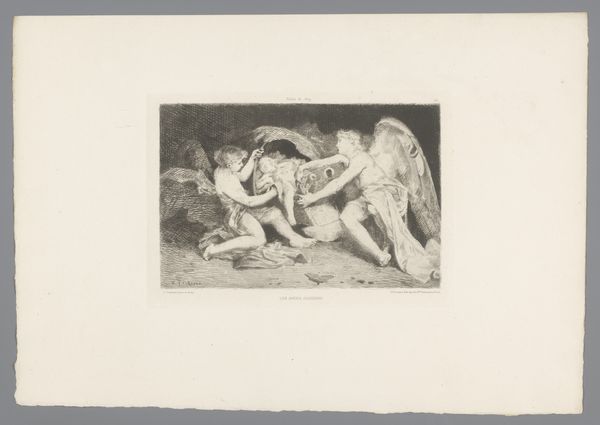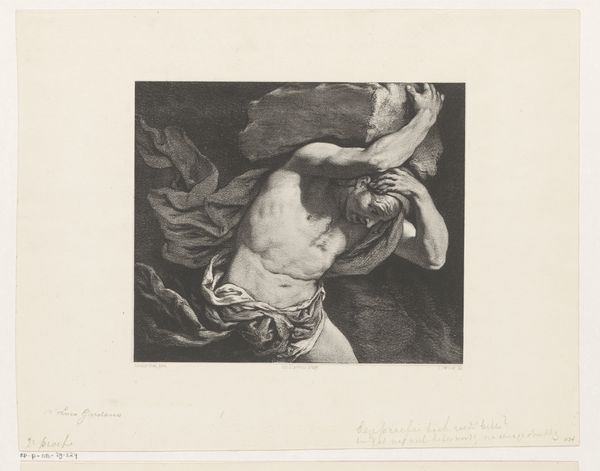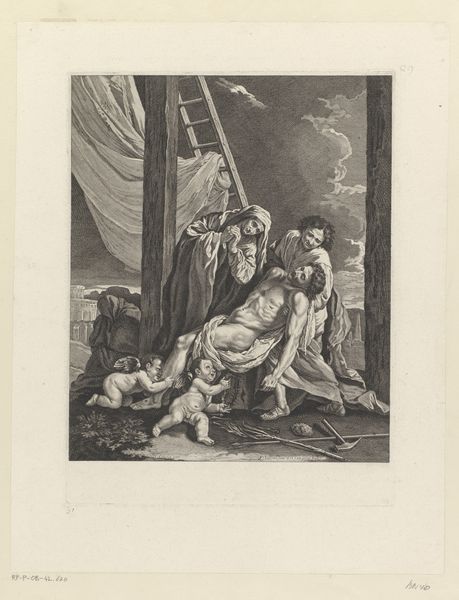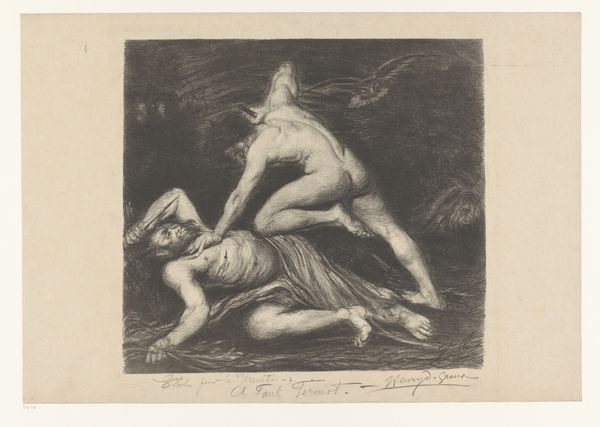
Dimensions: height 158 mm, width 224 mm
Copyright: Rijks Museum: Open Domain
Curator: Welcome to the Rijksmuseum. Today, we're examining "Naakte jonge vrouw voor een oude man op korenschoven," or "Naked Young Woman Before an Old Man on Sheaves of Grain," an etching made by Claude Henri Watelet in 1758. Editor: It strikes me immediately as… well, quite theatrical. The lighting, the poses…it’s all so carefully arranged, like a scene from a play. And those sheaves look really uncomfortable to lie on. Curator: Watelet was very much a figure of the Enlightenment. He wasn't just an artist, but also an influential art critic and writer. What we see here reflects a fascination with idealized nature, popular at the time, blended with a somewhat staged view of pastoral life. This etching circulated in a luxury edition. Editor: Interesting. The process of creating such a pristine print seems almost at odds with the earthy subject matter, doesn't it? Etching allowed for detailed reproduction, yet the context of a 'luxury edition' is far removed from the realities of rural life and agricultural labor. Also I'd be curious what dyes he used for these grey hues, as opposed to ink drawings. Curator: Precisely. While seemingly rustic, the work certainly participated in a visual culture crafted by and for the elite. What could be read in such imagery about perceptions of the period? Editor: Right. This artwork really invites questions about the labor required to produce both the art itself and the scenes it depicts, the very uncomfortable, unyielding materials upon which his figure sprawls. In truth, neither is very bucolic or pleasant. What purpose did these etchings play? Curator: This genre scene offered the contemporary viewer a sort of escapism, transporting them into what they conceived to be a simpler, more innocent time while maintaining a controlled distance, so to speak, never engaging in the actual material conditions of such a life. Editor: And who has access to those types of illusions of innocence? It is intriguing how techniques that enable replication served such an ideological and economic framework. Curator: Indeed, these prints highlight the complexities inherent in representing labor and the idealization of the natural world within a carefully constructed social order. Editor: This piece really showcases how the materiality and its wider circulation played into a social landscape of the eighteenth century, creating a seemingly 'natural' image in a manner that was actually highly crafted and political. Curator: It's an image that speaks volumes about the visual diet and sensibilities of its time, doesn't it? Editor: Absolutely, an artistic process embedded in social realities.
Comments
No comments
Be the first to comment and join the conversation on the ultimate creative platform.


